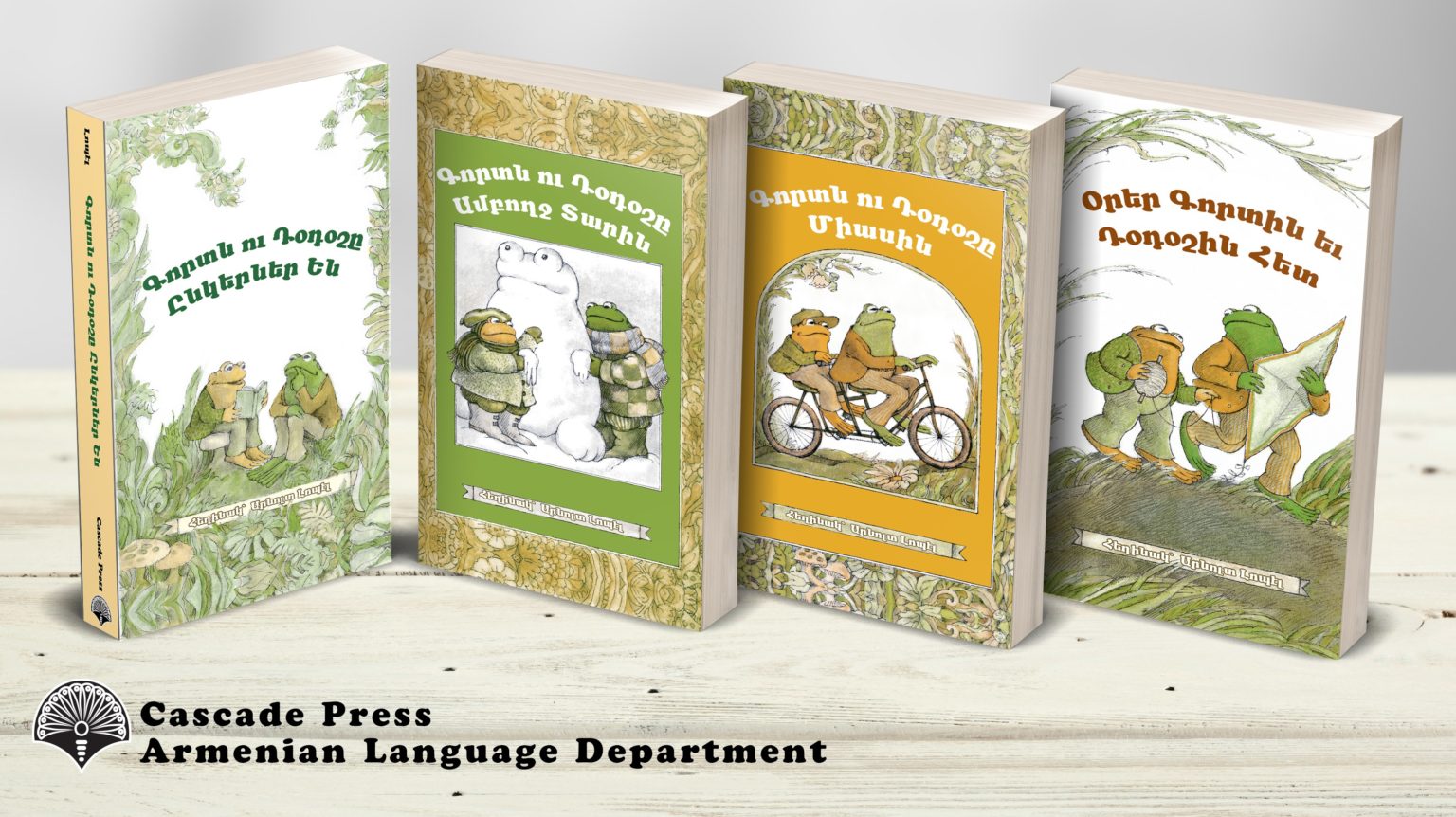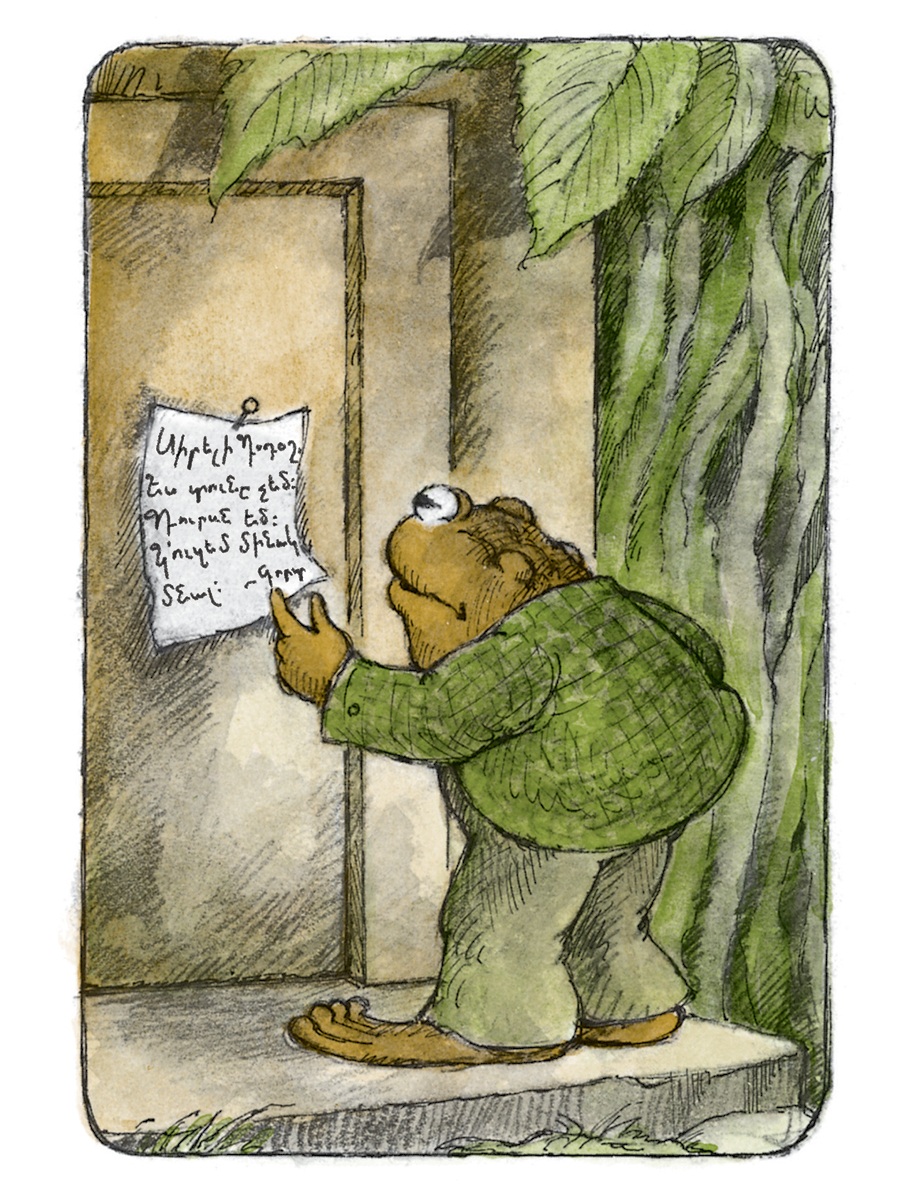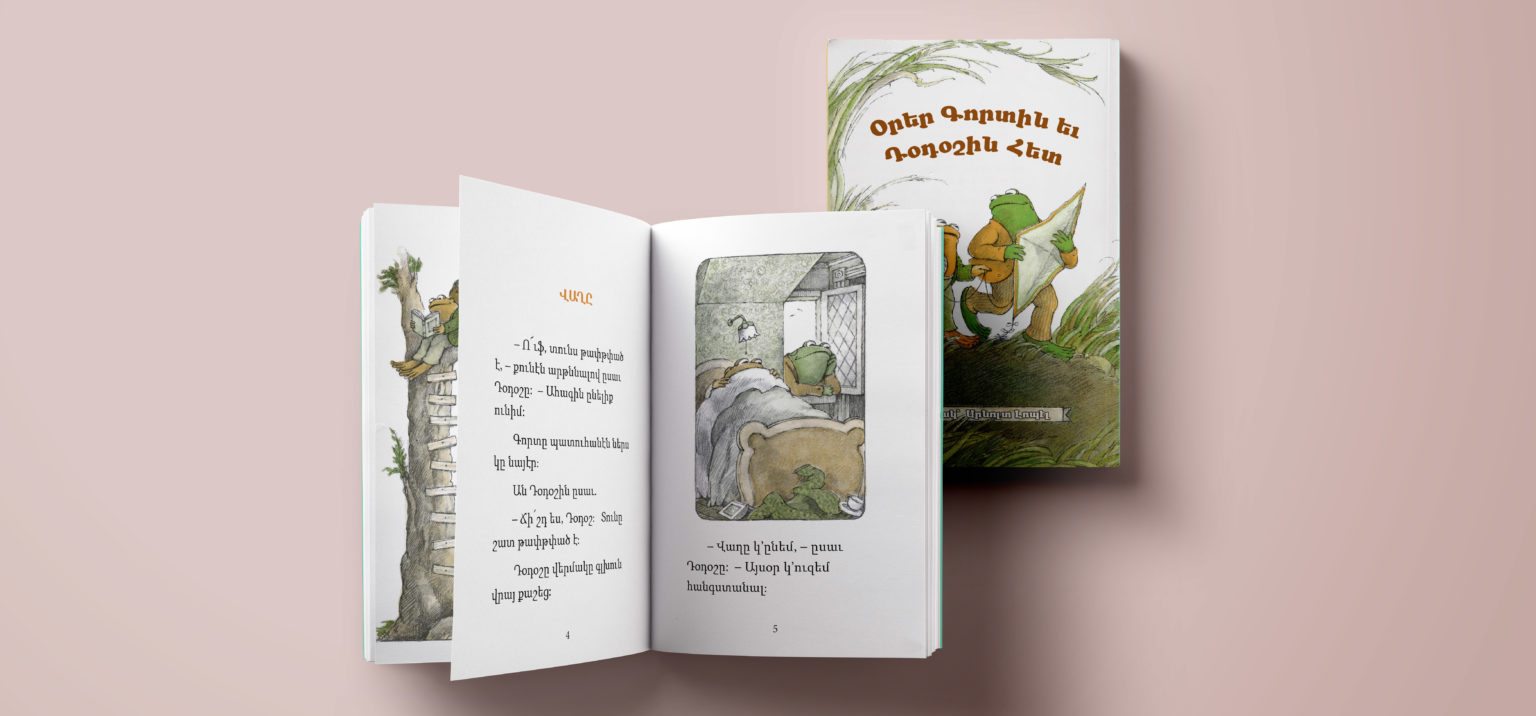(Armenian weekly)- The Armenian School of St. Leon Armenian Church in Fair Lawn, New Jersey in conjunction with Cascade Press is proud to present the first-ever Armenian language translation of Arnold Lobel’s Frog and Toad series.
This translation project started about a year ago and seeks to set a new standard for Armenian language learning. From February to May of 2019, the upper school classes were engaged in interactive language workshops. During these sessions, these classic children’s books were translated by the students under the guidance of their teachers. In this fashion, the classroom truly came alive. As students sought to find the perfect words to capture the spirit of the original English text, they would often act out scenes from the book. Lively discussions would often ensue about word selection or about striking just the right balance between grammar correctness, colloquial speech/slang, and overall readability.
Since these books are heavy on dialogue, the students had quite a bit of fun as they channelled their inner frog and toad. But more importantly, these students were actively creating in the Armenian language. Through brainstorming, intense use of the whiteboard, and intimately connecting with the source material, the students showed that they too can create in the Armenian language.
Following the initial translation, the texts were first edited by the Armenian school teachers and then passed to Armenia for a second round of editing before yet more proofreading and final editing. The paperback books are now available in both Eastern and Western Armenian. If read out loud by a parent, these stories are perfect for ages two and up. As “easy reader” books, Frog and Toad is recommended for students ages six and up.
The Frog and Toad series consists of four books that chronicle the lives of best friends Frog and Toad. Each 64-page book consists of five stories that capture the essence of their friendship in clear, simple terms. Some examples of the simple adventures that these friends go on include the following:
- Learning how to fly kite despite being bullied by some mean birds
- Tracking down a lost button
- Telling scary stories
- Tending to a vegetable garden
-
Although seemingly simple, each story has quite a bit of depth that will be appreciated by students and parents alike. Themes of kindness, caring and mindfulness are skillfully woven throughout the books. Despite the overwhelming digital distractions that a student encounters today, Frog and Toad show that sometimes what is most important is listening to your thoughts and truly understanding who you are.
Haig Norian, Ph.D. of Cascade Press recently sat down with the principal of St. Leon Armenian School, Nora Vartivarian Balekji to discuss the translation project in greater detail.
Haig Norian: Where did the idea for the translation project come from?
Nora Balekji: Engaging the true and full attention of the student has always been the goal of the teacher – be it in the newly formed classrooms of our grandfathers and grandmothers that survived the genocide, the schools of our parents throughout the middle east and Europe, or the academies of our children here in the United States. Each generation has had different hurdles to overcome – some much more gruelling than others.
It is unfortunate but we have found that the students of the past ten years simply have too many distractions. Armenian school ranks very low on their priority list. Sports practice, music lessons, video games, social media – all of these prove to be very difficult to overcome.
H.N.: So, you had to somehow make Armenian language lessons take priority in the mind of the students?
N.B.: Exactly – students took no pride in learning conjugations and declensions. They were bored as they would bluntly (and often) tell us. So, we needed to make language acquisition something fun. The students needed to feel in control. Not simply learning grammar rules – the students needed to feel that they were creating something themselves – that they were in control of their learning.
H.N.: And how did it go?
N.B.: It was like a dream come true. The students absolutely loved the fact that they were doing something that had never been done before. For many of them, Frog and Toad was a childhood favorite. For them to be translating this book was a true source of pride.
H.N.: Why did you choose Frog and Toad?
N.B.: The reading level of the Frog and Toad perfectly matched the needs of our students. To be honest, there aren’t many new Armenian books being published each year. Those that are being released are either too easy (a few words per page) or too advanced (like some of the translations being released in Armenia). Our students need a stepping-stone to get to the more advanced material. The FROG AND TOAD books are perfect “easy reader” books. Each page has about five to ten sentences and beautiful illustrations. The grammar and syntax are simplified so that the student can master core competency in reading and comprehension. Also – when a student completes a book, it truly is a big accomplishment for them as each book is 64 pages!
H.N.: Do you have further plans for translations?
N.B.: Yes – going forward, we plan to translate two books per year. Now we want to translate children’s picture books. We are considering a publication of RIGHT NOW, written by David Kherdian and Nonny Hogrogian. It’s a very cute book about mindfulness and making the most of the present moment – no matter what has happened in the past and no matter what may come.
H.N.: I like that! Embracing the here and now…which is precisely what you have done with this translation initiative!
N.B.: We have a job to do, and we won’t take NO for an answer. We must teach our students to create. We must give them the confidence to proudly use the Armenian language. We cannot simply wait for an artist/writer/poet to magically appear. As teachers, it is our duty to cultivate the future writers that will keep our language alive for centuries to come.



